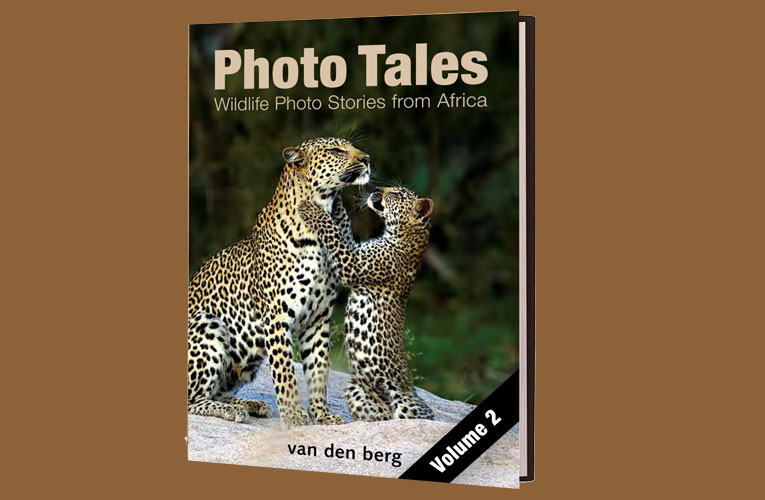Book unveils tragedy and drama in animal kingdom as it divulges its beauty and charm
By Edward Tsumele
This book is quite unique for different reasons, as it does not only carry interesting stories about the life lived by wild animals in general and the predator tribe in particular, but also the story tellers are amateur photojournalists who have neither experience nor training in the field. Their stories however are well told, and the images accompanying these stories have the potential to give professional photojournalists a good run for their money.
Gong trough this book, one gets to understand well the world of the wild, and how the concept of survival of the fittest in the jungle is so serious that it is sometimes what separates one animal from living or dying, literally.
This is so because in the world that the animals inhabit in the bush, for certain animals to survive, especially the bigger predator animals, they have to eat other animals, especially the smaller ones, mainly those which do not belong to the same tribe. But there are rules however. For example, it is unlikely, unless under extreme circumstances, that a jackal would want to eat another jackal. In fact the wild also has some ethics of sorts.
The several writers and photographers who are contributors to this book, clearly have love for the bush, and their stories beautifully told in both text and photography ,are not only educational as they are also interesting. These stories also give valuable insights into this other world lived by wild animals. Going through this book, it dawned on me that in the books of wild animals, it is taken for granted that they have to kill each other in order for them to survive as there seems to be no other option by to do so, particularly the predator tribe..
Can you imagine the horror of it if the same principle was the case in the world inhabited by human beings. Well, I guess some will argue that it is the same thing in our world, for example it is common to use each other in order to fulfill our own selfish interest.
For example they would point at politicians who will campaign during a heated election, promising ordinary people heaven on earth If they vote them into power, only to turn around against the very same people they used to get into power once they are comfortable in those positions of power. This could be argued, is a sophisticated way of ‘eating smaller animals’ for the politicians’ own survival. And so be careful not to judge the wild animals and their ‘wild’ rules and principles, simply because sometimes human beings act exactly like the predators portrayed in this book, in which bigger predator animals eat smaller animals for their own survival.
The pictures in this book capture different animals, from warthogs, jackals, birds, elephants to hippos, among others, in some sort of activity, such as chasing each other for a meal, or a mundane thing of just being.
These images and stories are captured in different game reserves around the country, including the Kruger National Park, in Limpopo/Mpumalanga, Kgalagadi Transfrontier Park, Northern Cape, and Hluluwe Mfolozi Park, in Kwa-Zulu-Natal, to name but only a few from where these stunning pictures and fascinating stories of the wild emanate.
Photo Tales: Wild Life Photo Stories from Africa is compiled by Heinrich, Phillip, and Ingrid Van den Berg, and Ronel Bouwer, edited by Ronel Bouwer and published by HPH Publishing.
The publishing of these extraordinary stories and photographs by these amateur photojournalists, follows the success of the wildly popular Photo Tales, and HPH Publishing this time, is presenting Photo Tales: Volume 2. In essence, this book showcases extraordinary stories told by amateur photojournalists. Photo Tales: Volume 2 reveals wonders of nature as seen through the camera lenses of regular visitors to game reserves.
The stories unveil the tragedy and the drama in the animal kingdom. But they also divulge the beauty and charm of the natural world, and the thoughts and feelings of the lucky few who have witnessed these incredible scenes.
The best way to immerseyourself in a book is for one to read such a book first hand, and therefore experience all this for yourself through these captivating accounts of once-in-a-lifetime experience.
The contributors
Here is a full list of the contributors. Nic Andrew, Ronald Lake, Adam Kotze, Edmund Alymer, Edoardo Mioda, Dave Woollacott, Les Bridgland, Luca Neto, Marius Kritzinger, Seyms Brugger, Thokazani Phakathi, Rudi Ziesterer, Ayesha Cantor, Carol Polich, Richard Norman, Clark Tom Prins, Sandra Clayton, Hammon Prinsloo, Lesley Cornish, Hannes Rossouw, Bruce Crossey, Burkhard Schlosser, Johan Croukamp, Kurt Schultz, Ciszanne Crous, Matthew Schurch, Eduardo Del Alamo, Michael J Skellern, Kevin Dooley, Brian Stratton, Gavin Duffy, Louis Taljaard, Jean du Plessis, Anton Geyser, Callum Evans, Isak Pretorius, Koos Fourie, Tom van den Berg, Yvan Francey, Ronald van den Hoeck, Gerhard Geldenhuys, Dustin van Helsdingen, Borja Gonzáles, Willie & Gerda van Schalkwyk, Armand Grobler, Elmar Venter Darryl Jacobs, Paul Vorster, Andries Janse van Rensburg, Derek Whalley, Barbara Jensen Vorster, Rolf Wiesler, Mohammed & Sharifa Jinnah ,Rolf Willig, Bomber Kent and Fred von Winckelmann.










